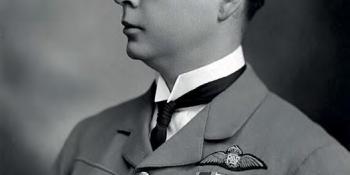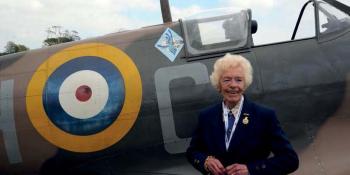Group Captain Percy Charles Pickard DSO and Two Bars, DFC, led the famous raid by Mosquitos on Amiens prison in February 1944. He did not survive the raid, it being suggested he had taken the risk of looking for survivors of one of the Mosquitos that had been shot down a few moments earlier, exposing his own aircraft to enemy fighters with fatal consequences. This is still believed today, yet it is simply not true. So what really happened on Pickard’s last flight?
Percy Pickard ranks among the likes of Guy Gibson and Leonard Cheshire as icons of Bomber Command. He was born on 16 May 1915 at Handsworth, Sheffield and was educated at Framlingham College in Suffolk before gaining his RAF commission in 1937. By 1940 he was flying Wellington bombers with 99 Squadron. On 19 June 1940, Pickard was forced to ditch his severely damaged Wellington into the North Sea after being hit by flak over Germany. He and his crew were fortunate to vacate the stricken aircraft immediately after it had landed on the water, and were later picked up by a lifeboat. Strong leadership and determination were the hallmarks of “Pick’s” character, for which he was very much admired. These characteristics made him an obvious choice to play Squadron Leader Dickson in the popular Oscar-winning 1941 film Target for Tonight.
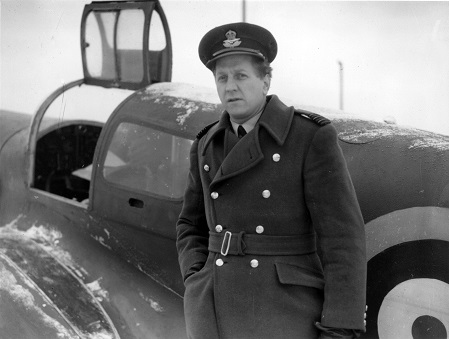
The legend of Pickard was created by the success of this film. He was a tall, fair-haired man, mild mannered with an ever-present pipe in his mouth. The archetypal understated British hero, with a stiff upper lip and a charming manner which endeared him to both the general public and the men he commanded. In 1942 he led the 12 Whitley bombers acting as troop carriers in Operation Biting, the raid on the German Radar installation at Bruneval. Later he began flying sorties for the SOE, dropping agents into occupied Europe. By December 1943 he had been promoted to the rank of Group Captain and took over 140 Wing of the 2nd Tactical Air Force, under the direct control of AOC 2 Group, Air Vice-Marshal Basil Embry. It was in this new role that he was briefed on a new and urgent mission code-named Ramrod 564.
The Amiens Prison Raid
It has long been accepted that the purpose of the daring attack on the prison in Amiens on 18 February 1944, was to free members of the Resistance hours before a mass execution. Although this aim has frequently been called into question, and has now been shown to be a myth created by British Intelligence, the Mosquito crews carried out the attack in the unshakable belief that this was a life-or-death rescue mission. Commonly known as Operation Jericho (a post-war name given to the raid), the plan was for two sections, both consisting of six Mosquitoes, to attack the prison in two waves to break down its walls and enable the inmates to escape. A third wave of six Mosquitos would follow behind ready to be called in if any of the objectives had not been achieved by the first waves. The decision to call in the third wave was to be made by the pilot of a Film Production Unit (FPU) Mosquito who would make a number of runs over the prison after the dust had settled to assess the damage.
We’ll use the signals ‘red’ and ‘green’, repeated three times; so that if you hear me say ‘red, red, red’ you’ll know you’re being warned off and will go home without bombing. If I say ‘green, green, green’ it’s clear for you to go in and bomb.
When the plans for the attack were drawn up only days before the operation was due to take place, Air Vice-Marshal Basil Embry was detailed to lead the raid. However, at the last moment Air Marshal Trafford Leigh–Mallory, Commander-in-Chief of the Allied Expeditionary Air Force, decided to forbid Embry from taking part in the raid. This was possibly because Embry knew too much about the plans for D-Day, which were already being discussed at senior level, or because he did not want to risk such a senior officer on what was a potentially very dangerous mission. Regardless of the reasons for this decision, Pickard was the natural replacement for Embry, and so he took over the senior officer’s role for the raid.
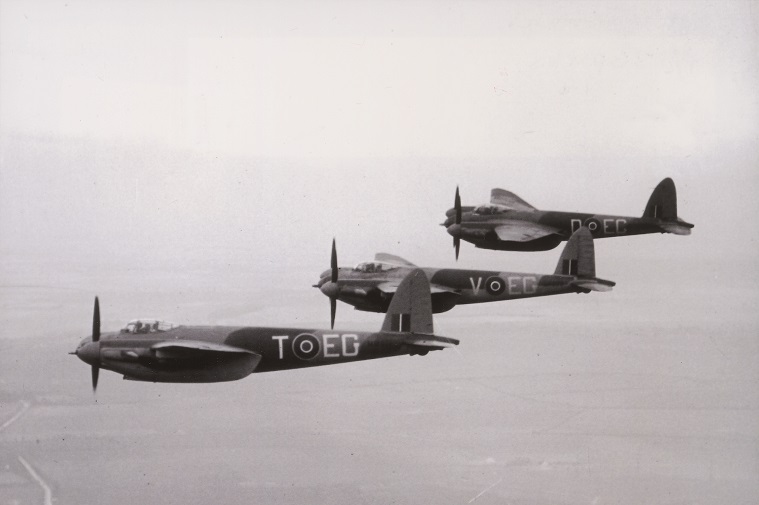
Embry would usually have flown as No.2 in the lead formation, allowing the squadron leader to lead his men and giving Embry a little more freedom to observe the raid as a whole rather than concentrating on waypoints and so on. It is therefore natural to assume that Pickard would have initially planned to be in this slot. However, at the last moment the third wave’s orders were changed from “back up as directed” to “destroy the prison entirely”’ – which would necessarily result in a heavy loss of life.
This clearly troubled Pickard as the burden of responsibility for ordering the killing of many innocent prisoners now lay with Flight Lieutenant Tony Wickham, the pilot of the FPU Mosquito, whilst he, the senior officer, would in theory be flying at full speed back to Britain at that crucial moment. Consequently, Pickard came up with a somewhat riskier plan to place himself in the number twelve position; at the very rear of the second wave.
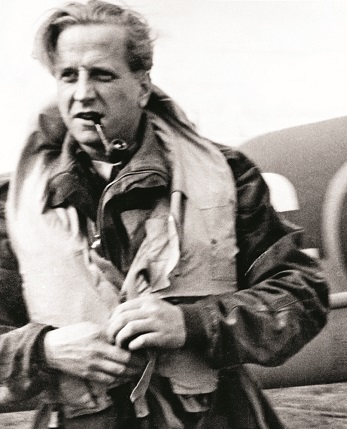
This position would enable him to take part in the bombing of the prison and allow him to break away from the others to see the combined effects of the first and second waves. This would also allow him to make the judgement as to whether the third wave, scheduled to arrive 10 minutes later, would be required. Pickard explained how this would work to the other crews: “When I have dropped my bombs I shall pull off to one side and circle, probably just to the north of the prison. I can watch the attack from there; and I’ll tell you by radio. We’ll use the signals ‘red’ and ‘green’, repeated three times; so that if you hear me say ‘red, red, red’ you’ll know you’re being warned off and will go home without bombing. If I say ‘green, green, green’ it’s clear for you to go in and bomb.”
The Wrong Place at the Wrong Time
On the morning of the raid, the weather took a hand in fate. Heavy snow showers were scattered across the length of southern England, sometimes reducing visibility to zero. The much needed fighter escort of three squadrons of Typhoons was pretty well grounded by the atrocious weather. Few pilots managed to take off and even fewer still managed to rendezvous with the Mosquitos. It was clear the latter were all but on their own and about to fly into an area of France littered with Luftwaffe fighter bases hosting the latest and deadliest of all German fighters at the time, the Focke-Wulf Fw 190.
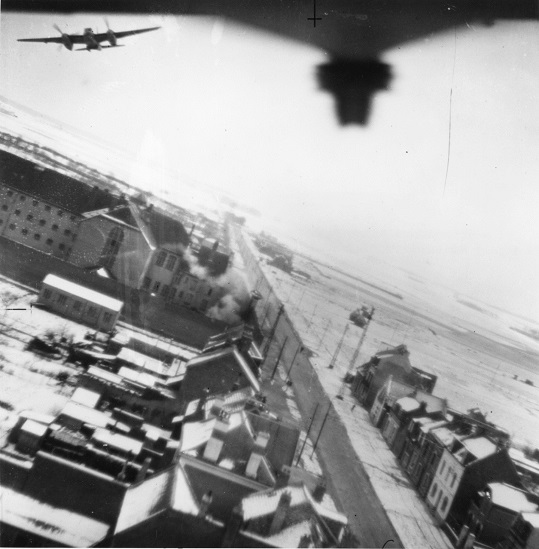
The two waves of Mosquitoes crossed the Channel without incident and were soon well inland and heading for Amiens. Unfortunately the first wave misjudged a turning point at Albert, putting itself a few minutes behind schedule. Insignificant though this was in itself, it meant that the second wave, running on time, was now following too close and would arrive over the target just as the delayed action bombs of the first wave would detonate. Seeing all this in front of him, the leader of the second wave, Wing Commander “Black” Smith made a snap decision to take his six Mosquitoes in a wide orbit south of the route d’Albert to allow time for the first wave’s bombs to explode and the dust to settle. However, this decision, correct in every way, helped ensure that Pickard’s Mosquito, Mk.VI HX922 EG-F, flying at the formation’s rear, fell into the gunsights of a roaming Fw 190 that happened to appear out of the clouds over Glissy aerodrome at that very moment.
Around midday on 18 February 1944, a training flight of Fw 190s from 7/JG 26 was airborne to the north of Amiens when it was redirected to investigate a raid heading towards them. The presence of the Luftwaffe had been expected, but as already mentioned, only a handful of the fighter escort Typhoons had made it to the target area. Leading the German formation was Oberleutnant Waldemar Radener who ordered his men to drop below the cloud layer to look for the raiders. This was a good tactic, as it enabled them to make swift observations and would give them the element of surprise if they encountered any enemy aircraft.
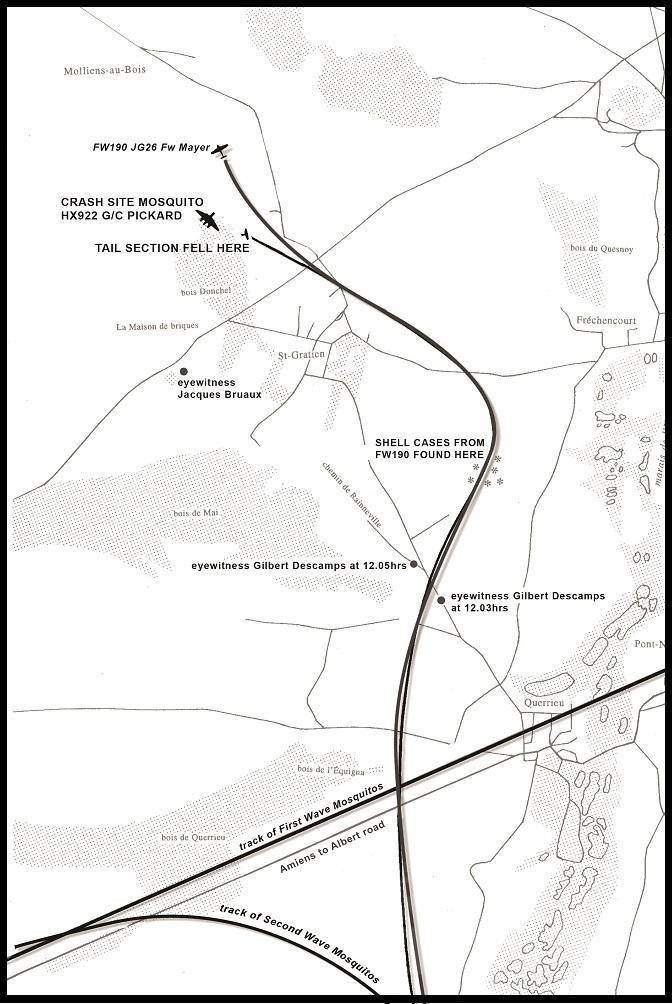
At 12.04 hours Radener and Feldwebel Wilhelm Mayer descended out of the cloud layer and spotted several Mosquitos and Typhoons beneath them. Radener quickly slipped unseen behind the Typhoon of Flying Officer Renaud of 174 Squadron and shot it down without the other RAF pilots even noticing. Mayer, meanwhile, latched onto six Mosquitos below him and naturally selected the last aircraft in the formation to “pick-off”. He subsequently reported that his quarry broke away from the formation and headed towards Querrieu-Fréchencourt; the chase was on.
Inside the Mosquito, Pickard, and his navigator, Flight Lieutenant John Broadley, found themselves in an impossible position. Having been in a slow turn at the rear of the formation, Pickard’s only option was to jettison his bombs and open his throttles in an attempt to outpace the deadly Fw 190 now on his tail. The only way to build up speed was to press ever lower and within seconds the two aircraft were skimming over the snow covered fields and woods east of Amiens.
The Eyewitnesses
Below the aerial activity, on the road from Querrieu to Saint-Gratien, four horses led by Gilbert Descamps were quietly pulling an old farm cart. Gilbert was 22-years-old and had managed to avoid the deportations to Germany the previous year, continuing instead to work on the family farm on rue Cavee in the village of Querrieu. Progress was slow due to the icy road and Gilbert did not want to rush the horses.

Having stopped to observe a large formation of aircraft flying to the south of him, (probably the second wave), a few minutes later he was stopped again in his tracks by the sound of gunfire. Looking to the south he saw an aircraft approaching at low level followed by another smaller aircraft. The smaller aircraft was firing tracer rounds and shells which were creating a striated smoke pattern through the sky. Several of these rounds struck the area where the horses were and exploded. In a split second Gilbert clambered underneath the cart for protection.
Back in the Mosquito, Pickard saw the tracer shells explode on the ground in front of him and desperately pulled the Mosquito into a hard left turn near the village of Saint-Gratien. However, the Focke-Wulf was far more agile and within seconds had regained its position less than 150 metres behind Pickard’s aircraft. At that range, Mayer could not miss. He carefully lined up the large Mosquito in his sights and opened fire again. This time his cannon shells struck home, bright flashes peppered the Mosquito’s tail section and the combat was over, less than a minute after Meyer had broken cloud cover.
The smaller aircraft was firing tracer rounds and shells which were creating a striated smoke pattern through the sky. Several of these rounds struck the area where the horses were and exploded. In a split second Gilbert clambered underneath the cart for protection.
Back on the ground farm labourer Jacques Bruaux was cutting wood in a small thicket north of the Bois du Château when he was distracted by the sound of aircraft engines. He saw an aircraft coming from the south pursued by another and heard the sound of gunfire. Jacques looked on in amazement as the leading aircraft lost its entire tail section and disintegrated. Moments later, Jacques saw a large cloud of black smoke billowing into the freezing air from Donchel Wood.
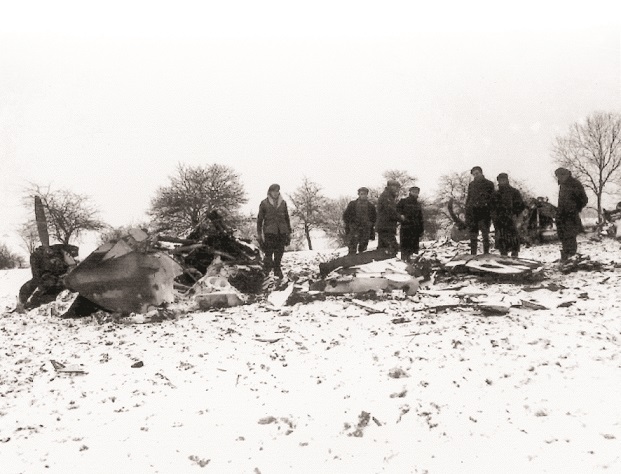
As the sound of the second aircraft’s engine faded into the distance, Jacques Bruaux and his friends ran to the scene of the crash. Passing the crossroads and then over the fields, they saw fragments from the Mosquito lying strewn about the area. The tail section was located on a slight slope and further on they came upon the main impact point of the front section. The wreckage was on fire and the heat was intense. No one could get close to the ’plane and they withdrew some distance when ammunition started to explode. After several minutes, the sounds of detonating ammunition ceased and the villagers moved towards the inferno. Although the wreckage was still in flames, the locals managed with some difficulty to remove two bodies from the fire. Both of the occupants were badly burnt, but amongst the wreckage a scorched driving licence bearing the name Alan Broadley was recovered, providing final proof that this was the crash site of HX922.
Back at the prison, the Mosquitos of the first and second waves had made their carefully choreographed attacks on the prison with remarkable accuracy. The walls were breached in several places and Tony Wickham observed prisoners escaping across the snow-covered fields that surrounded the prison. Wickham continued to orbit the area, listening out for code-words from Pickard that would either call-in the third wave or send it home without bombing. As minutes ticked by and nothing was heard from Pickard, Wickham assumed the responsibility for the third wave attack and called it off, clearly to him the objectives had been achieved.
A Legend War Created
To continue the cover story regarding the real purpose of the raid, British Intelligence produced a press release which detailed the heroic exploits of Pickard and his men in knocking down the walls and releasing the prisoners. To be fair, at the time, the exact circumstances of Pickard and Broadley’s crash were unclear. The Mosquito crews would have assumed Pickard bombed the prison as none of them saw him break away or get shot down. In fact some of them reported seeing him orbiting to the north after the attack, clearly assuming that the photographic Mosquito was Pickard’s aircraft.
It was stated at the time by Air Commodore D.F.W. Atcherley, as recorded in Air Ministry Bulletin No.16106, that Pickard had broken away from the formation to investigate the crash site of Squadron Leader McRitchie who had just been brought down by anti-aircraft fire. “He must have been well aware that in doing so he was taking a chance on enemy fighters,” wrote Atcherley. “While pre-occupied watching the ground in search of survivors of the first crash he was probably bounced.” This was entirely imaginary as McRitchie was not shot down until after Pickard had been attacked but it added much to the legend of the Amiens raid and so was not officially discredited.
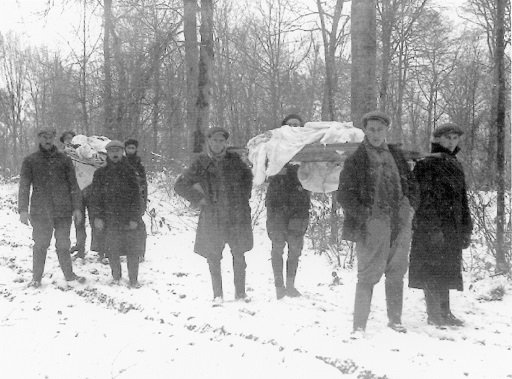
Thus the official story of Operation Jericho has Percy Pickard bombing the prison and then orbiting the area to assess the results before falling to the guns of a Fw 190. Even to this day there are still illustrations being produced that show Pickard’s “F-Freddie” racing over the prison buildings and dropping bombs, whilst it is frequently stated that Pickard was killed during the closing stages of the action. However, by 12.07 hours, when the second wave bombed, the wreckage of HX922 was burning fiercely in a wood several miles away.
Evidence of this timing comes from several sources, including a battered and burned wristwatch found in the wreckage with its hands stopped at precisely 12.05 hours. The Fw 190 pilot also later reported that his victory occurred at 12.05 hours. Furthermore the British ‘Y Service’ picked up a message at 12.07 hours reporting two victories. Given that pilots would not instantly get on the radio, as they were still in the combat area, these must relate to Pickard’s Mosquito and the 174 Squadron Typhoon. McRitchie was not hit until after 12.10 hours.
A few days after the raid, the Germans took the airmen’s bodies away from Saint-Gratien and buried them in Saint-Pierre Cemetery in Amiens, where they lie to this day. As you stand at the immaculately maintained headstones, the imposing walls of the Amiens prison can be seen through the trees just a few hundred yards away.
It is ironic to reflect that despite the continuing legend and myth surrounding Operation Jericho, the closest “Pick” actually came to the prison was when the Germans laid him to rest alongside his navigator and friend Alan Broadley, both men victims of the cruel and fickle hand of fate.

